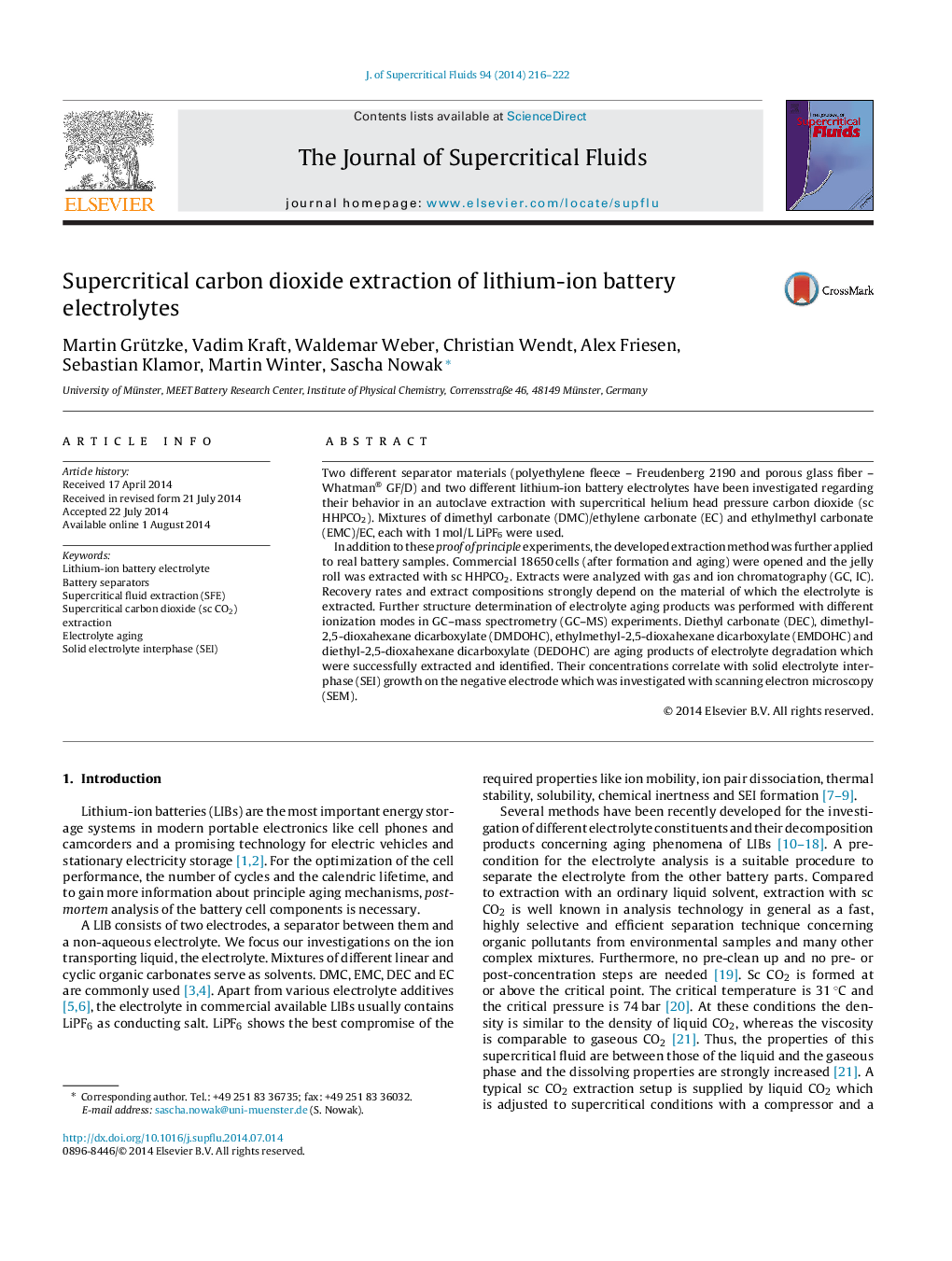| Article ID | Journal | Published Year | Pages | File Type |
|---|---|---|---|---|
| 230395 | The Journal of Supercritical Fluids | 2014 | 7 Pages |
•Autoclave extraction with supercritical carbon dioxide for lithium ion battery electrolytes.•Investigations on the extraction behavior.•Extraction of aging products and identification of several products with different methods (GC, IC).
Two different separator materials (polyethylene fleece – Freudenberg 2190 and porous glass fiber – Whatman® GF/D) and two different lithium-ion battery electrolytes have been investigated regarding their behavior in an autoclave extraction with supercritical helium head pressure carbon dioxide (sc HHPCO2). Mixtures of dimethyl carbonate (DMC)/ethylene carbonate (EC) and ethylmethyl carbonate (EMC)/EC, each with 1 mol/L LiPF6 were used.In addition to these proof of principle experiments, the developed extraction method was further applied to real battery samples. Commercial 18650 cells (after formation and aging) were opened and the jelly roll was extracted with sc HHPCO2. Extracts were analyzed with gas and ion chromatography (GC, IC). Recovery rates and extract compositions strongly depend on the material of which the electrolyte is extracted. Further structure determination of electrolyte aging products was performed with different ionization modes in GC–mass spectrometry (GC–MS) experiments. Diethyl carbonate (DEC), dimethyl-2,5-dioxahexane dicarboxylate (DMDOHC), ethylmethyl-2,5-dioxahexane dicarboxylate (EMDOHC) and diethyl-2,5-dioxahexane dicarboxylate (DEDOHC) are aging products of electrolyte degradation which were successfully extracted and identified. Their concentrations correlate with solid electrolyte interphase (SEI) growth on the negative electrode which was investigated with scanning electron microscopy (SEM).
Graphical abstractFigure optionsDownload full-size imageDownload as PowerPoint slide
